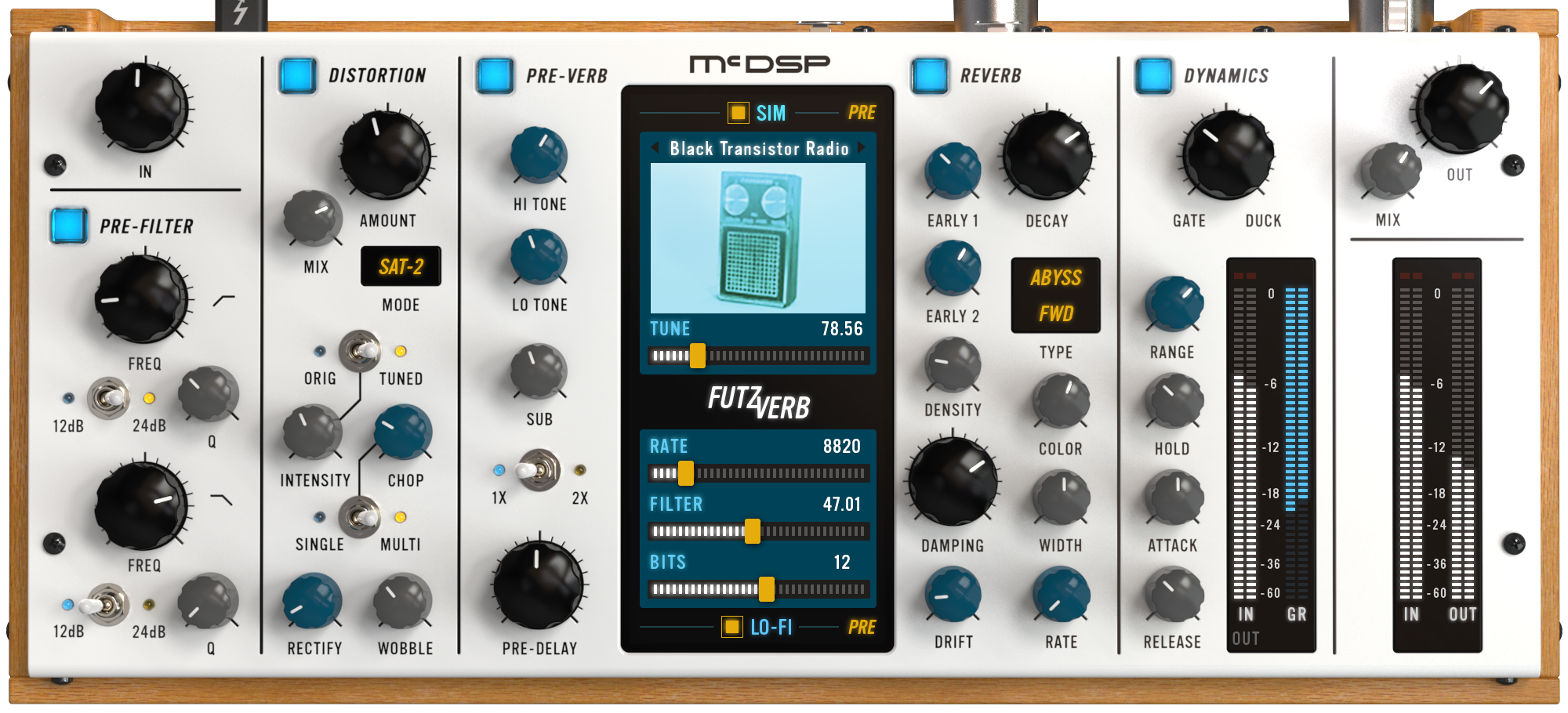Saturation and Reverb are two distinctly different audio effects; one adds everything from subtle warmth to extreme destruction, while the other gives the source a sense of space. As such, when you put both effects together, it’s easy to end up with something that is completely unrecognizable from what you started with. But what’s really happening here?
Saturation = Compression?
First, let’s discuss an aspect of saturation that’s important for this topic: saturation often results in some degree of compression. This is part of the reason why a signal may sound fuller with saturation applied. Quiet parts get louder and louder parts get quieter, leading to a much lower dynamic range and more dynamic consistency.
We can see this in action just by comparing the waveforms of a signal before and after saturation has been applied. This first image is a waveform for a piano track before saturation has been applied. The transients are obvious and we can clearly see the decay of each note before the next one is played.
But it’s a different story once saturation is applied. You can still tell where the transients are, but there is much less of a volume difference between the loudest and softest parts of this piano track. Visually, this is a result that is very similar to what we may get if we compressed the signal instead of saturating it.
Why Does Any of That Matter?
Who doesn’t love a nice reverb tail? No one, that’s who!
And what does a nice reverb tail have in common with the first piano waveform image above? It’s usually very dynamic! Let’s take the sound of a reverb with a long decay on a snare drum for instance: The sound of the snare drum hit at the beginning is significantly louder than reverb decay’s quietest point, and the human ear is accustomed to hearing reverberated sounds naturally decay like that.
But wouldn’t it be cool if we took the original signal, made its decays sound louder with saturation, and then passed it all into a reverb? We’d be bringing up very subtle nuances in the original signal and then causing those nuances to linger much longer by processing them through a reverb. Ultimately, we could create sounds that are very different from the original!
FutzVerb: A Saturation & Reverb Powerhouse!
Lucky for you, FutzVerb is the perfect plug-in for adding Saturation AND Reverb to any track!
Building on the very popular FutzBox plug-in, FutzVerb contains the same pre-filtering and distortion features, and adds a sub octave generator, relocatable SIMs and Lo-Fi effects (pre verb, post verb, or in the reverb tank itself), and plenty of other tools to fine tune your next distortion masterpiece. The FutzVerb reverberation engine includes a wide variety of reverb and reflection types, two early reflection stages, drift modulation, and stereo field adjustment. A dynamics section post reverb can gate or duck the reverb output as needed.
Like FutzBox, FutzVerb uses SIMs (Synthetic Impulse Models) to provide accurate modeling in an extremely optimized format, allowing FutzVerb to use less DSP power than conventional convolution based products. Furthermore, SIMs can be scaled in real-time and changed on the fly.
Let’s hear it all in action with some audio examples:
Want to check out FutzVerb for yourself? Try out a free 14-day, fully functional FutzVerb trial
here.As always, we hope you learned something new! Be sure to sign up for our newsletter below to stay up to date on all things McDSP. We’ll see you next time!



